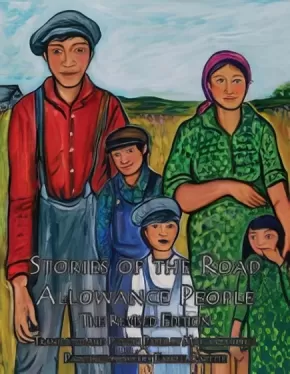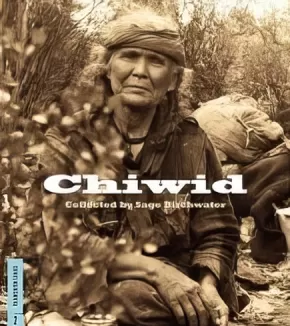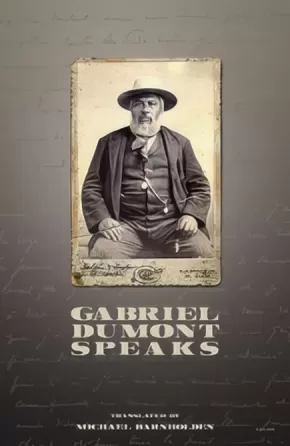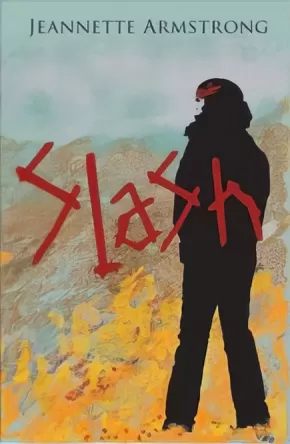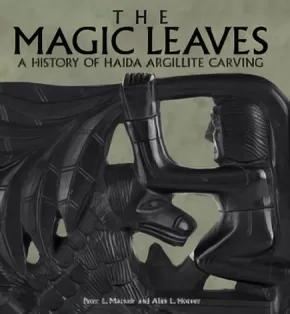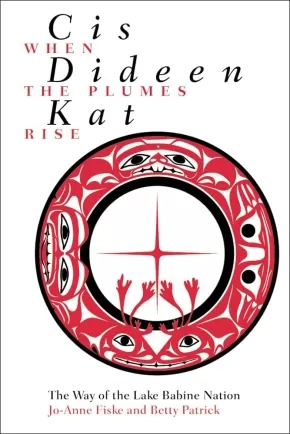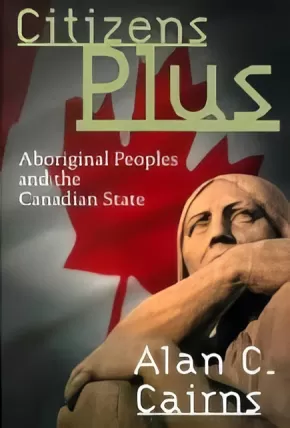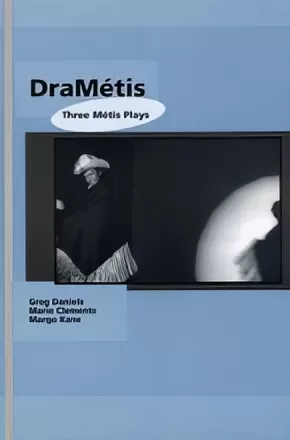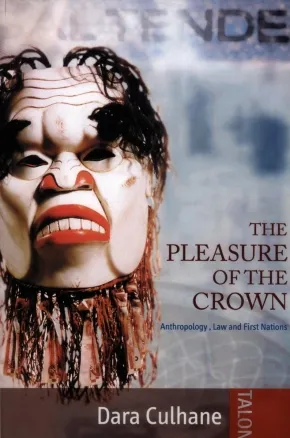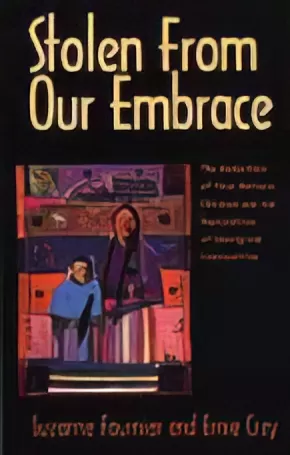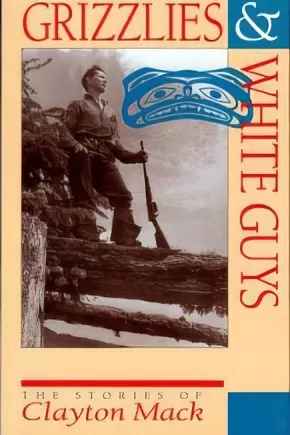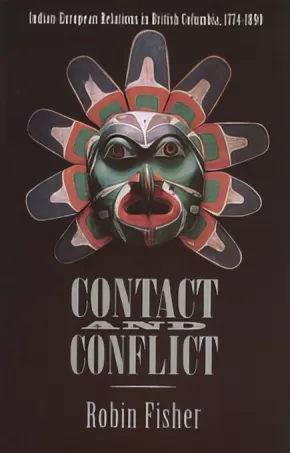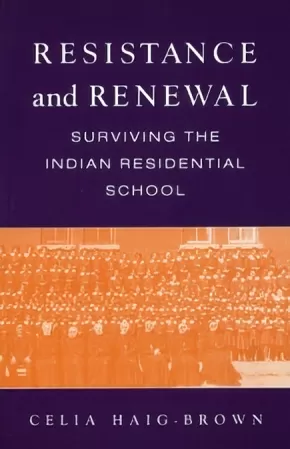BC First Nations Studies 12
Synopsis:
Deluxe redesign of the Gerald Lampert Award-winning classic.
This edition of A Really Good Brown Girl features a new Introduction by Lee Maracle, a new Afterword by the author, and a new cover and design by the renowned typographer Robert Bringhurst.
First published in 1996, A Really Good Brown Girl is a fierce, honest and courageous account of what it takes to grow into one's self and one's Métis heritage in the face of myriad institutional and cultural obstacles. It is an indispensable contribution to Canadian literature.
"No other book so exonerates us, elevates us and at the same time indicts Canada in language so eloquent it almost hurts to hear it." --Lee Maracle, from the Introduction
Educator Information
This resource is also available in French: Une vraie bonne petite Métisse.
Additional Information
112 pages | 6.00" x 8.50"
Synopsis:
Maria Campbell’s highly-acclaimed Stories of the Road Allowance People is the quintessential collection of traditional Michif stories. Since it was first published in 1995, this treasured resource has given voice to Métis Elders and has informed both Métis and non-Métis about the traditional Michif worldview. The Gabriel Dumont Institute is honoured to offer this invaluable book in a new edition. With a new story and introduction by Maria Campbell, new artwork by Sherry Farrell Racette and a narration component in English and in Michif, Stories of the Road Allowance People provides readers with poignant retellings of Michif traditional stories handed down from lii vyeu—the Old People.
Synopsis:
Chiwid was a Tsilhqot'in woman, said to have shamanistic powers, who spent most of her adult life "living out" in the hills and forests around Williams Lake, BC. Chiwid is the story of this remarkable woman told in the vibrant voices of Chilcotin oldtimers, both native and non-native.
Reviews
"Chiwid was a Chilcotin woman who lived outside, self-sufficiently for most of her life and moving camps with the seasons. Chiwid is a collection of oral histories about the woman, her family and what life was like in the Chilcotin area of British Columbia in the early to mid-1900s." - The Association of Book Publishers of BC. BC Books for BC Schools. 2009-2010.
Additional Information
128 pages | 8.00" x 9.00"
Authenticity Note: This book's author is not Indigenous; however, the book has the Authentic Indigenous Text label because it contains stories collected by the author from Indigenous and non-Indigenous peoples. It is up to readers to determine if this book will work as an authentic text for their purposes.
Synopsis:
Gabriel Dumont's memoirs present a rare view of Métis history as told by one of their key heros.
In 1903, eighteen years after leading the Métis Army against the Northwest Expeditionary Force and the Northwest Mounted Police at Fish Creek, Duck Lake and Batoche, Louis Riel’s Adjutant General Gabriel Dumont dictated his memoirs to a group of friends, one of whom is thought to have written Dumont’s stories out in longhand during that epic meeting. This manuscript languished unseen and unpublished in the Manitoba Provincial Archives as part of L’Union nationale métisse de Saint-Joseph collection until its discovery there by Michael Barnholden in 1971. Now re-translated into English, it preserves the record of an unrepeatable oral recital, offering us a rare opportunity to view one of the central events in the history of the Métis in a new context: as perceived by one of their key heroes.
Like Riel, Dumont put the interest of his people ahead of his own. Although he could neither read nor write, he was an eloquent speaker, sought after to defend Métis rights both in Canada and the United States throughout the 1880s and 1890s. Known to have spoken Blackfoot, Sioux, Crow, Cree, French and English, Dumont dictated his memoir in “incipient Michif,” thought to be his first language: using Cree syntax and some verbs, with a vocabulary that was primarily French.
Dumont’s first-person account of the details of his early life, leading up to the events variously referred to as the Riel Rebellion, the Northwest Rebellion or the War of 1885, provide a third reading of the “Rebellion” from the point of view of its military leader, as well as many personal, cultural and historical revelations worthy of examination. In addition, Dumont’s sheer strength of narrative carries these decisive events with a conviction, drama and suspense that only the tradition of oral history can deliver.
Synopsis:
Slash is Jeannette Armstrong's first novel. It poignantly traces the struggles, pain and alienation of a young Okanagan man who searches for truth and meaning in his life. Recognized as an important work of literature, Slash is used in high schools, colleges and universities.
Additional Information
252 pages | 5.50" x 8.50"
Synopsis:
Peter Macnair and Alan Hoover recount the history of Haida argillite carving since it began in the early 1800s, and they describe more than 200 examples from the extensive collection of the Royal BC Museum
Argillite is a dense, black shale mined from a quarry on Haida Gwaii (Queen Charlotte Islands), reserved for the exclusive use of Haida carvers. Argillite works are unique in style and character, ranging from ceremonial pipes and model poles to elaborate platters and chests.
Synopsis:
The heart of the traditional legal order of the Lake Babine Nation of north-central British Columbia is the grand ceremonial feast known as the balhats, or potlatch. Misunderstood and widely condemned as a wasteful display of pride, the balhats ceremonies were outlawed by the Canadian government in the late nineteenth century. Throughout the years that followed, the Lake Babine Nation struggled to adapt their laws to a changing society while maintaining their cultural identity.
Although the widespread feasting and exchange practices of the balhats have attracted continuous academic and political interest since the nineteenth century, little consideration has been given to understanding the legal practices embedded within the ceremonies. Cis dideen kat, the only book ever written about the Lake Babine Nation, describes the customary legal practices that constitute "the way."
Authors Jo-Anne Fiske and Betty Patrick use historical and contemporary data to create a background against which the changing relations between the Lake Babine Nation and the Canadian state are displayed and defined, leading to the current era of treaty negotiations and Aboriginal self-government.
Through interviews with community chiefs and elders, oral histories, focus groups, and archival research, Fiske and Patrick have documented and defined a traditional legal system still very much misunderstood. Their findings include material not previously published, making this book essential reading for those involved in treaty negotiations as well as for those with an interest in Aboriginal and state relations generally.
Cis dideen kat was shortlisted for the 2001-2002 Harold Adams Innis Prize.
Synopsis:
In Citizens Plus, Alan Cairns unravels the historical record to clarify the current impasse in negotiations between Aboriginal peoples and the state. He considers the assimilationist policy assumptions of the imperial era, examines more recent government initiatives, and analyzes the emergence of the nation-to-nation paradigm given massive support by the Royal Commission on Aboriginal Peoples. We are battered by contending visions, he argues – a revised assimilation policy that finds its support in the Canadian Alliance Party is countered by the nation-to-nation vision, which frames our future as coexisting solitudes. Citizens Plus stakes out a middle ground with its support for constitutional and institutional arrangements which will simultaneously recognize Aboriginal difference and reinforce a solidarity which binds us together in common citizenship. Selected as a BC Book for Everybody.
Synopsis:
DraMétis is the first anthology to focus on the emerging discipline of Métis drama. The pieces have all been previously produced and highlight the diversity of Métis drama being written and performed in Canada.
Synopsis:
In-depth analysis of the 130-year history of the Aboriginal title issue in British Columbia, including the Gitksan and Wet'suwet'en case.
Anthropologists have traditionally studied Europe’s “others” and the marginalized and excluded within Europe’s and North America’s boundaries. This book turns the anthropologist’s spyglass in the opposite direction: on the law, the institution that quintessentially embodies and reproduces Western power.
The Pleasure of the Crown offers a comprehensive look at how Canadian, particularly British Columbian, society “reveals itself” through its courtroom performances in Aboriginal title litigation. Rather than asking what cultural beliefs and practices First Nations draw on to support their appeals for legal recognition of Aboriginal title, Culhane asks what assumptions, beliefs, and cultural values the Crown relies on to assert and defend their claims to hold legitimate sovereignty and jurisdiction over lands and resources in B.C. What empirical evidence does the Crown present to bolster its arguments? What can thus be learned by anthropologists and the public at large about the historical and contemporary culture of the powerful?
Focusing in particular on the Gitksan and Wet’suwet’en case, the book traces the trial of Delgamuukw. v. Regina from its first hearing during 1987 and 1991 to its successful appeal to the Supreme Court of Canada, which issued a landmark ruling on the case on December 11, 1997.
Additional Information
416 pages | 6.00" x 9.00" | Paperback
Synopsis:
This important and timely book is a balance of the most gruesome elements of assimilation: church-run schools, the child welfare system, survivors of sexual abuse, and Foetal Alcohol Syndrome counter-balanced against heroic stories of children who survived, fought back, and found their way home.
Harrrowing stories are presented wherever possible in the first person, by Fournier, a journalist, and Cree, a B.C native spokesperson and activist, and a stolen child himself. The final message is optimistic, suggesting that redress and reconciliation could enrich the entire country by creating healthy aboriginal communities.
Synopsis:
The extraordinary life story of Clayton Mack (1910-1993), a legendary hunting guide from the Nuxalk Nation (Bella Coola), is told in his own words. To Clayton Mack, who loved the wilderness and whose most precious memories were of the days when people got around without roads, told time without watches, and took planks from giant cedars without axes, the two most mysterious creatures on earth were grizzly bears and "Q''umsciwas" (white men) - from Crooked Jaw the Indian Agent to the rich and famous men who hired him to guide them on their trophy hunts.
"The tales are told by a natural storyteller, who as a child was carried as a prop in Native ceremonial dances, and who later found himself dining in Hollywood restaurants with California''s most powerful people. His stories are wild and bawdy and funny and tragic, and they reach back through history. They are like native ritual dances, in that it''s impossible to separate the magic from the realism: at the end, you will wonder what was real and what was dream. The arnazing thing is, it''s all true. It''s all true."
-Mark Hume, journalist for the "Vancouver Sun," "National Post" and author of "The Run of the River"
Synopsis:
Written mainly by First Nations and Métis people, this book examines current issues in First Nations education.
Table of Contents
Introduction
Eastern Door: Reconceptualizing First Nations Education
1. Towards a Redefinition of Indian Education
2. Peacekeeping Actions at Home: A Medicine Wheel Model for a Peacekeeping Pedagogy
3. Redefining Science Education for Aboriginal Students
Southern Door: Connecting with and Maintaining Our Relations
4. Aboriginal Epistemology
5. Quaslametko and Yetko: Two Grandmother Models for Contemporary Native Education Pedagogy
6. Language and Cultural Content in Native Education
7. Learning Processes and Teaching Roles in Native Education: Cultural Base and Cultural Brokerage
Western Door: Meeting the Challenge of Incoherence
8. A Major Challenge for the Education System: Aboriginal Retention and Dropout
9. Teacher Education and Aboriginal Opposition
10. The Challenge for Universities
11. Non-Native Teachers Teaching in Native Communities
Northern Door: Transforming First Nations Education
12. Treaties and Indian Education
13. Taking Control: Contradiction and First Nations Adult Education
14. Locally Developed Native Studies Curriculum: An Historical and Philosophical Rationale
15. The Sacred Circle: An Aboriginal Approach to Healing Education at an Urban High School
Bibliography of First Nations Pedagogy
Contributors
Index
Marie Battiste (editor), a member of the Mi'kmaq Nation, teaches in the Indian and Northern Education Department at the University of Saskatchewan.
Jean Barman (editor) is a Professor in the Department of Social and Educational Studies at the University of British Columbia.
Synopsis:
Originally published in 1977, and reprinted several times since, Contact and Conflict remains an invaluable account of the profound impact that white settlement had on Native-European relations in British Columbia after the fur trade ended. Robin Fisher argues that the fur trade had a limited effect on the cultures of Native people. Both Natives and Europeans were involved in a mutually beneficial economic system, and there was no incentive for non-Native fur traders to alter radically the Native social system. With the passing of the fur trade in 1858, however, and the beginning of white settlement, what has been a reciprocal system between the two civilizations became a pattern of white dominance.
The second edition includes a preface in which the author re-examines his original arguments, surveys the literature since 1977, and comments on directions for new research. The original edition of the book was published at a time when there was relatively little written by historians on the subject. Today, Contact and Conflict is still widely used by scholars and students, and its arguments have endured, yielding new insights into the role of Native people in the history of British Columbia.
Synopsis:
One of the first books published to deal with the phenomenon of residential schools in Canada, Resistance and Renewal is a disturbing collection of Native perspectives on the Kamloops Indian Residential School(KIRS) in the British Columbia interior. Interviews with thirteen Natives, all former residents of KIRS, form the nucleus of the book, a frank depiction of school life, and a telling account of the system's oppressive environment which sought to stifle Native culture.
Winner of the Roderick Haig-Brown Regional Prize (BC Book Prize) in 1989.
Now in its 8th printing.
Authenticity Note: This book has received the Authentic Indigenous Text label because of the interviews and contributions of Indigenous peoples in this work, whom the author thanks and acknowledges in the introduction of the book. It is up to readers to determine if this an authentic work for their purposes.




